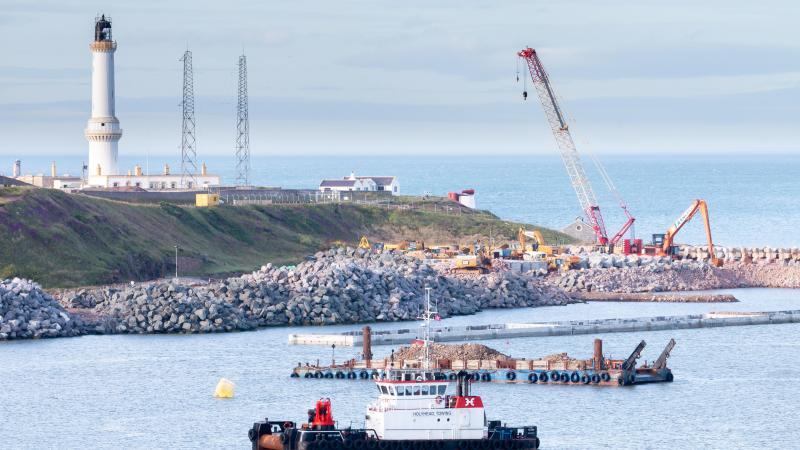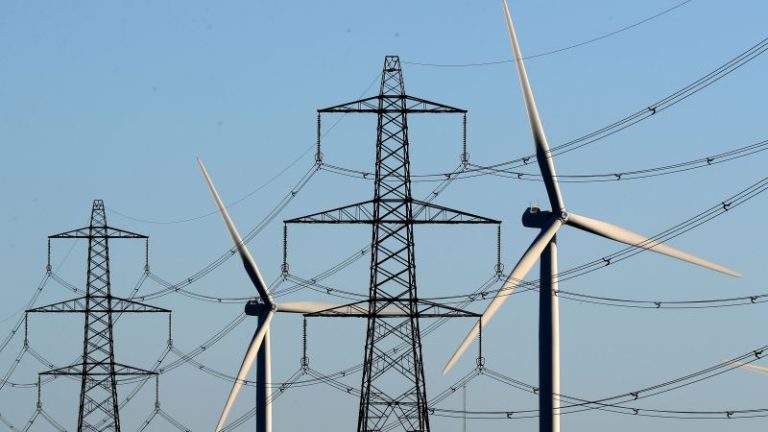Projects worth £6.5bn to offshore wind industry pass first stage
Ministers have fired the starting gun on £6.5 billion of investment projects in ports, shipbuilding and manufacturing that could create thousands of jobs in Scotland’s offshore wind industry.
Huge infrastructure upgrades and new facilities are needed at locations around the country to support the building and assembly of equipment required for the ScotWind developments.
The offshore leasing round was first announced two years ago and hopes to bring more than 28 gigawatts of new wind generating capacity into Scottish waters in the next decade or so.
An update published on Tuesday confirms that 38 projects have made it through the first stage of what is known as the Strategic Investment Model (SIM). That is a collaboration between the Scottish government and its agencies alongside the Scottish Offshore Wind Energy Council (SOWEC) and developers.
The process is trying to ensure public and private sectors are working together to make Scotland an attractive place to invest and highlight the long-term pipeline of opportunities that are available to domestic and overseas investors across the offshore wind supply chain.
Some details on the first three projects to make it to the second phase of the SIM process have been revealed and they are estimated to be worth up to £500 million in total.
That includes expansions at the Port of Cromarty Firth and Port of Nigg as well as an undisclosed supply chain deal, which is being kept under wraps because of commercial confidentiality.
The hope is that all three of those can attract money to move forward with their investment plans and act as exemplars for other SIM projects to follow.
At the Port of Cromarty Firth the aim is to develop an additional five hectares of storage space that would allow for the construction of about one gigawatt of floating offshore wind capacity each year.
A facility there would be capable of assembling the foundations and the turbines with the port estimating peak employment of almost 1,150 people as well as more than 1,000 indirect positions.
The expansion of the deepwater quay at the Port of Nigg would also support a large laydown and storage area for offshore wind structures and would accommodate the vessels used to transport them.
Gillian Martin, Scotland’s energy minister, said: “The Scottish government is determined to maximise the economic opportunities and benefits from our offshore wind potential.
“Moving these three projects — with a combined capital value of around £500 million — to the next stage of the Strategic Investment Model is a significant step.”
Other projects mentioned in the first phase include a hub at Scapa Flow in Orkney, shipbuilding for support vessels and several new fabrication and steel manufacturing plants. There are also proposals for expansions at various harbour and ports including at Eyemouth, Fraserburgh, Stornoway, Kishorn, Lerwick and Port of Aberdeen.
Some of the projects have already been mooted with XLCC, a maker of high-voltage subsea cables, having previously outlined its plans to build a manufacturing plant in Ayrshire that could employ about 900 people.
Gillian Morrison, the supply chain development manager at Crown Estate Scotland and chairwoman of the SIM working group, said: “Today’s details of some of the projects that the SIM is working to support helps make real the scale of the opportunity that we can grasp for Scotland, if we put in place the necessary infrastructure to help grow our supply chain and deliver Scotland’s offshore wind pipeline.”
Brian McFarlane, of SSE Renewables and also the industry co-chairman at SOWEC, said: “The Strategic Investment Model is helping the offshore wind sector work together to prioritise its infrastructure and supply chain needs.
“Scotwind is a huge opportunity for Scotland, but to land this we need partnership between industry and government to ensure Scottish ports and supply chain are ready to capitalise on future manufacturing, installation and operation contracts.”






